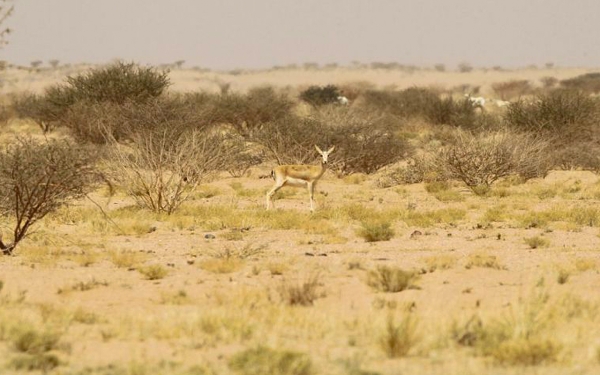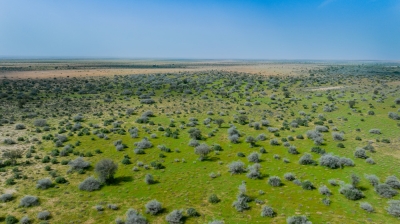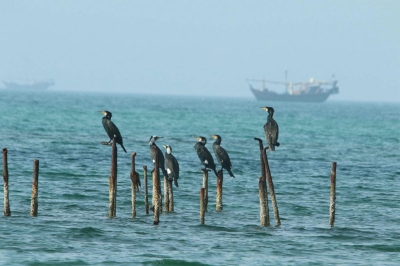

The Imam Saud Bin Abdulaziz Royal Reserve is a Royal Reserve in the Kingdom of Saudi Arabia, located northeast of Taif Governorate in Makkah al-Mukarramah Province. In 2018, a Royal Decree was issued to transform the Mahazat as-Sayd Protected Area into a Royal Reserve under the name of Imam Saud Bin Abdulaziz Royal Reserve, which is about 180 km away from Taif Governorate.
Area of Imam Saud Bin Abdulaziz Royal Reserve
Imam Saud Bin Abdulaziz Royal Reserve extends over an area of approximately 2,553 km, equivalent to 0.013 percent of the Kingdom's total area. It is overseen by the Council of Royal Reserves, chaired by the Crown Prince and Prime Minister, His Royal Highness Prince Mohammed Bin Salman Bin Abdulaziz.
Vegetation in Imam Saud Bin Abdulaziz Royal Reserve
The Imam Saud Bin Abdulaziz Royal Reserve is surrounded by a 220-km-long fence to serve as a natural laboratory for launching resettlement experiments on endemic wildlife species. The fence also helped preserve the vegetation that was on the brink of extinction. Hence, the reserve became teeming with annuals and seasonal weeds. Protection in the reserve is divided into two levels: one for wild animals, and the second for the environment and flora species.
The most prominent vegetation within the reserve are short weeds interspersed with scattered trees of Acacia, Atil (Maerua crassifolia), as well as some other desert plants, such as Saxaul, Arabian boxthorn (Lycium shawii), and Panicgrass.
Fauna of Imam Saud Bin Abdulaziz Royal Reserve
Among the most important animals living in the reserve are the Arabian wolf, Rüppell's sand fox, the sand cat, several species of rodents, as well as birds, chiefly the bald eagle, Eurasian griffon vulture, the Egyptian vulture, besides several reptile species.
In 1990, the resettlement program released seventeen Arabian oryx at the reserve, followed by other small groups at consecutive intervals, and also resettled Arabian sand gazelle and Houbara Bustard in the reserve during 1990-1991. Moreover, the program released, in the reserve, the red-necked ostrich, which is the closest ostrich species to the extinct Arabian ostrich, and the numbers of these species have been growing under protection.
Related quizzes
Related articles

